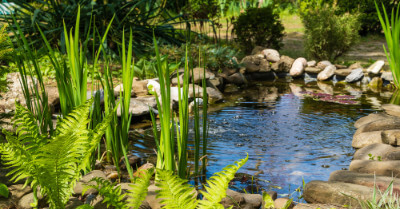Table of Contents
All About Roses
Origin
Roses are considered perennial plants, and they originate from the genus Rosa and are part of the Rosaceae family. Within the rose family, there are over 300 different species of roses, along with thousands of cultivators.
Many species of roses are native to Asia, but other species are native to Europe, North America, and northwestern Africa.
Appearance
Roses can be shrubs, climbing, or trailing. The plants can be small, with miniature flowers all the way up to seven meters in height for some climbers.
They typically have green stems that are covered in prickles. The flowers on roses can be a wide range of colors from whites, to pinks, to yellows, to reds. Roses are known for their beauty and are typically very fragrant, which adds to their appeal.
Caring For Roses
When to Plant Roses
Roses should be planted outside of the months where frost is possible. Roses go dormant during winter months. You should aim to plant your roses either in the spring after the last frost or six weeks before the expected first frost. This will allow the roots to establish before the plant goes dormant for winter. Or else you risk the health of the plant if it is unable to establish before going dormant. Your USDA zone can also help determine the best time to plant your roses.
It is also a good idea to determine if the species of rose that you are interested in will do well in your USDA zone. Certain species of roses will do better in different conditions. It is important to do your research to ensure that your rose bush will be healthy and thrive in the environment that you live in.
Hydration
Roses do not require an intense amount of hydration. Typically a good watering once or twice per week is sufficient for an established plant. For new rose bushes, you may need to water more frequently and give the plant 2 gallons of water 3-4 times per week. Large climbing roses may need 4-5 gallons of water 1-2 times per week because of their size. You will always be able to tell based on how the plant looks as well.
This will also depend on the soil and how much rain you are receiving. If it is overly dry or windy, you may need to water more frequently. However, if you are receiving a lot of rain, then once a week will be more than sufficient.
It is best to water in the morning hours if possible so the plant and leaves can dry out by evening. If the leaves of the rose bush are wet going into the evening hours, then it can potentially lead to mildew and root rot.
Sunlight
Roses enjoy plenty of direct sunlight. For a healthy and thriving rose bush, it is best to give you rose bush at least 4 hours of direct sunlight. Many will do even better with 6 to 8 hours of direct sunlight during the day.
Roses tend to be hardy plants and can still do well in partial sunlight as well as shade in some circumstances. Although the rose bush can still do well in partial sunlight to full shade, you may notice that they do not bloom as well without plenty of direct sunlight. If you pay attention to your plant, you will be able to tell if they are thriving in their environment.
Soil
Roses will grow best in loam soil. This means that the soil has a good mix of organic materials, air, and water. Loam includes the main elements and is 50 percent air so it is a great soil for rose bushes. It also contains 46 percent of inorganic material such as sand, clay, and silt and has 4 to 6 percent organic materials total. It is well draining and rose bushes tend to thrive when planted in loam.
The pH of the soil is also extremely important when growing a healthy and happy plant. The ideal pH for rose bushes is 6.5. If you need to adjust the pH, you can always add limestone to your soil. If you are unsure of your soil pH, you can perform at-home tests prior to planting so you are prepared ahead of time and can get your soil to the correct pH for your rose bush.
Fertilization
Roses grow best in nutrient-dense soil. However, you may not have soil that provides enough nutrients for your rose bush to thrive. Some people choose to fertilize their roses regardless in order to ensure that they are getting the proper nutrients. You have the option of choosing organic or inorganic fertilizer for your rose bushes. Organic fertilizer will typically release into the soil more slowly and over a longer period time than inorganic fertilizers so they are preferred by some people.
Organic fertilizer consists of things such as compost, manure, bone meal, or dried blood meal. Inorganic fertilizer is going to be a fertilizer that you will purchase at your local hardware store. You want to find a fertilizer that is a complete fertilizer with a high phosphorus ratio, such as 5-10-5, 4-8-4, or 4-12-4.
When to fertilize determines where the plant is at in the growth cycle and what time of year it is. You can fertilize once the first leaves appear as long as there is no danger of another frost. After this, you will want to fertilize after each bloom cycle and stop fertilizing 6 to 8 weeks before the first frost if possible. You want to avoid fertilizing too late into the year because if your plant has a lot of new growth, then it will die off when the first frost arrives.
Recent Articles



















